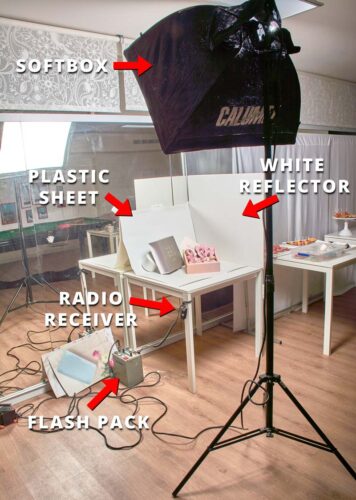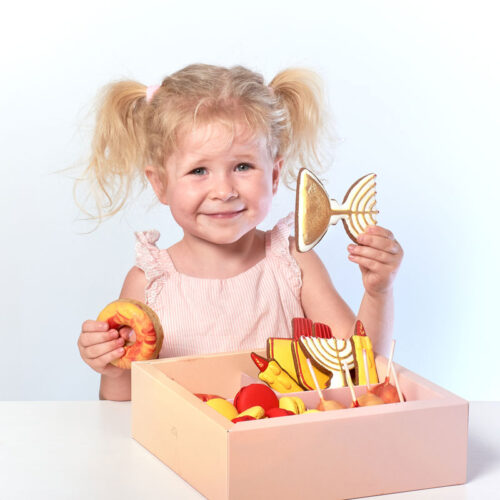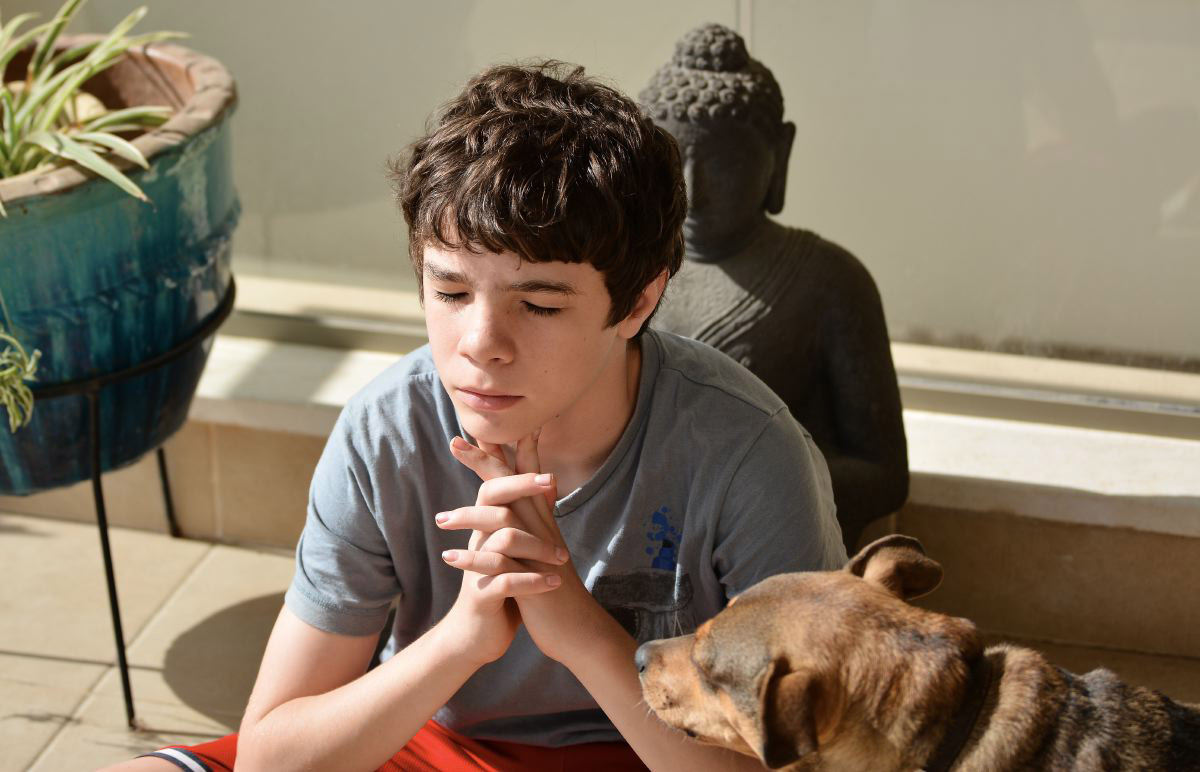PRODUCT PHOTOGRAPHY WITH ONE LIGHT
I recently took some product shots for Mariana Ardetz of her wonderfully creative designer cakes. They are packaged in beautifully designed presentation boxes and make great gifts for special occasions. Such high quality products need high quality photography to do them justice – so here’ a peak behind the scenes of how it’s done.

I set up a mini photography studio by using a sheet of white plastic to make a curved background, and placed a large sheet of white card to act as a reflector on one side of it. A flash head in a soft box diffuser pointed towards the products. A portable high voltage flash pack on the floor powered the flash head. A small radio transmitter on the hot shoe of my camera triggered a receiver connected to the flash pack – so each time I took a picture a powerful flash of soft light illuminated the products. The white reflector bounced light back onto them to soften the shadows.
This type of mini studio is quick and easy to set up: Most of the time and effort was spent on carefully arranging the products. Mariana and I kept at it until we are both satisfied with how the shots looked.
The camera was set to manual mode 1/200sec and ISO 100. I stopped the lens down to about F14 to make sure that all of the products were sharply in focus. To get the correct exposure I simply adjusted the power of the flash pack. At these settings only flash light illuminates the products – the room lighting (which has a different colour temperature) is not recorded. The pictures were saved in the camera as Raw files because these capture a lot more information and detail than Jpeg files.
But studio work is only half the story and post production can take a lot more time than the photography. After downloading the pictures into my computer I processed them in special software called Capture One to optimise their look and feel. When using this type of mini studio the background records as light grey rather than white, so I used Photoshop to make it white. This gives a professional look that sets off the products and looks good on websites.
At the end of the shoot I took a some quick shots of Mariana’s daughter. We sat her in front of a white wall, and I lit her with the softbox to the left of the camera position and a white reflector just outside the frame on the right (to bounce the flash and even out the lighting). A shadow on the lower right of the wall was eliminated using a small flashgun placed on the floor and set to the optical trigger mode (it’s triggered when the softbox flash fires). I had to set up the lights very quickly and just had time to take a couple of test shots and adjust the lens aperture to give a reasonably correct exposure – a quick look at the histogram is all that’s needed to make sure the highlights are not blown out and the exposure is OK.
Marianas designer cakes now look as good in the photographs as they do in real life. And they taste as good as they look too!
https://www.facebook.com/mariana.ardetz/


















